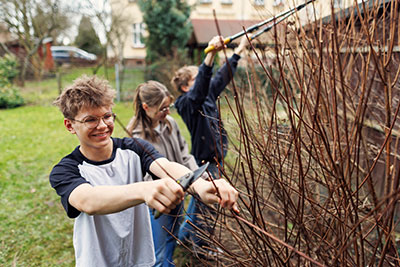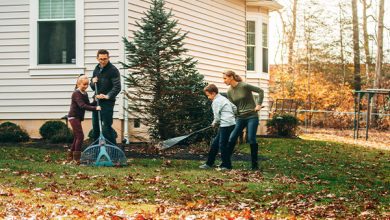How to Help Safeguard Your Home’s Exterior from Fire

 When it comes to fire prevention, many homeowners focus on the inside of their house –but your yard, deck, and roof are just as important. Wildfires and stray embers can spread quickly, and maintaining a fire-conscious exterior can help reduce the risk of damage. Here are some practical ways to help protect the outside of your home from fire hazards.
When it comes to fire prevention, many homeowners focus on the inside of their house –but your yard, deck, and roof are just as important. Wildfires and stray embers can spread quickly, and maintaining a fire-conscious exterior can help reduce the risk of damage. Here are some practical ways to help protect the outside of your home from fire hazards.
Create Defensible Space
A defensible space is the buffer you create between a building and the grass, trees, shrubs, or wildland area that surround it. This space is crucial for slowing or stopping the spread of fire.
- Zone 1 (0-5 feet from your home): Remove dead plants, mulch, and leaves. Keep grass short and well-watered. Avoid storing firewood or combustibles here.
- Zone 2 (5-30 feet): Trim tree branches at least 6 to 10 feet from the ground. Space out vegetation and clear debris.
- Zone 3 (30-100 feet): Maintain low-growing, fire-resistant plants and remove heavy brush.
Keep Gutters and Roofs Clean
Leaves and pine needles can accumulate in gutters and on rooftops, creating easy fuel for embers. Regularly clean your gutters and inspect your roof for debris, especially during dry seasons.
Choose Fire-Resistant Materials
If you’re updating or replacing parts of your home, consider fire-resistant materials:
- Use Class A roofing materials such as asphalt shingles, metal, or tile.
- Install ember-resistant vents and cover exterior soffits with mesh screening.
- Consider non-combustible siding like fiber-cement or stucco.
Store Combustibles Safely
Store firewood, propane tanks, and other combustible items at least 30 feet from your home. Never stack wood against the house or under decks.
Maintain Landscaping
- Trim trees so branches stay at least 10 feet away from your home and other trees.
- Remove dead or dry vegetation regularly.
- Use gravel or stone instead of bark mulch near your foundation.
Watch Where You Park
Avoid parking vehicles on dry grass. The heat from a car’s undercarriage can ignite vegetation. Always keep access paths clear for emergency responders.
Prepare for the Unexpected
Even with precautions, fires can happen. Review your homeowners insurance policy to understand how it can help cover fire-related damages. If you’re unsure about your coverage or need help assessing risk, contact us.
By staying proactive and maintaining the areas around your home, you can help reduce your fire risk. Whether you’re dealing with wildfire threats or seasonal fire concerns, these small steps can make a big difference.
If you’d like a review of your current homeowners policy or have questions about how your coverage applies to fire damage, our team at Richard B. Ryon Insurance is here to help. Feel free to reach out anytime.
Disclaimer: The information provided in this blog post is intended for general knowledge and informational purposes only, and does not constitute professional insurance advice. The content is not exhaustive and does not cover all potential situations. It is essential to review your specific insurance policy and discuss your individual circumstances with your insurance agent or broker. We strongly recommend that you consult with a qualified insurance professional to address your insurance needs and questions.
Source link



